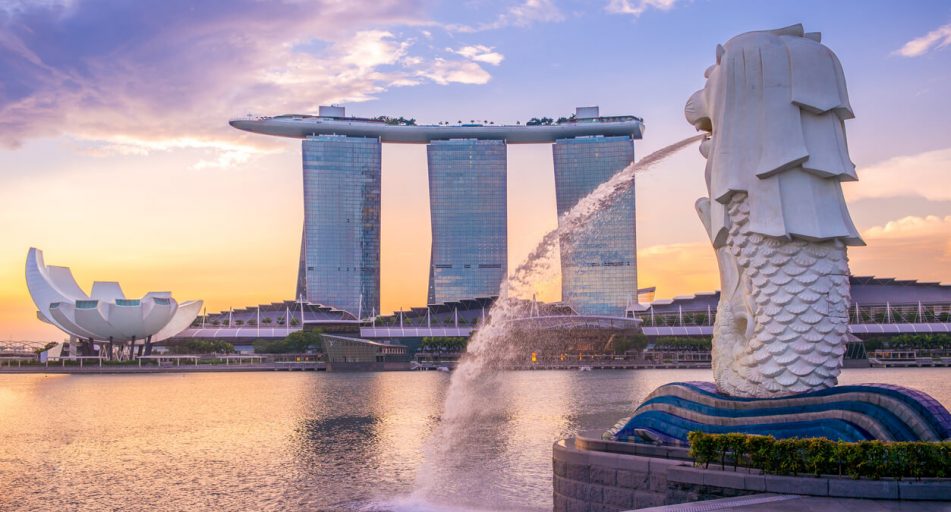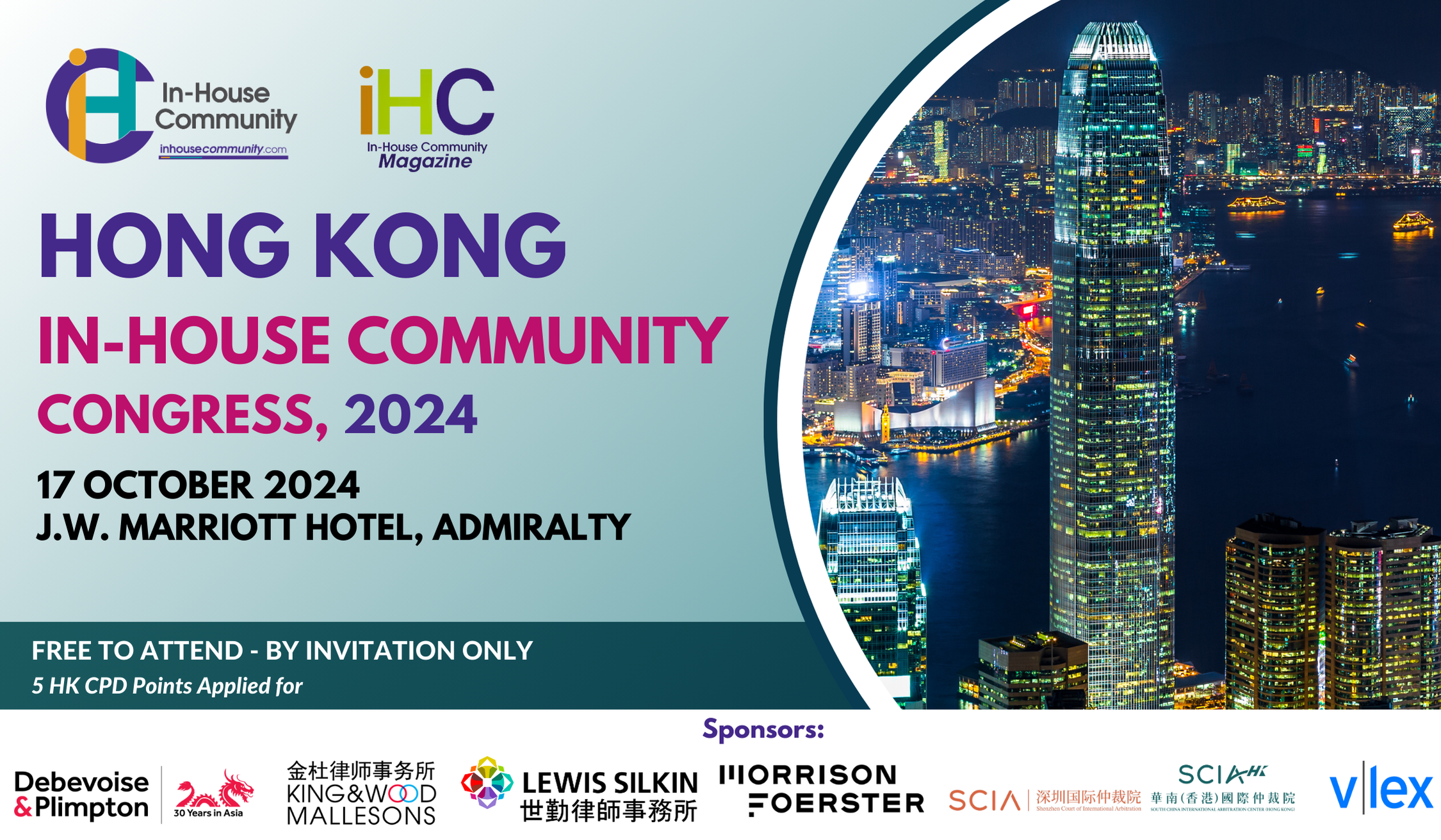June 27, 2024
IHC talks to Tianfu Liu, Vice President and Chief Counsel, Asia Pacific for Cabot Corporation, about his journey from private practice to glssobal legal strategist Could you share a little about your journey in your career so far and how you ended up in your current role? We’re especially curious about your additional role in business development! I studied law at CUPL in Beijing, McGill in Montreal and Penn in Philly. Prior to Cabot, I was a private practitioner between 2003 and 2010, first and briefly with MoFo in its then newly established Shanghai office and later with Freshfields Bruckhaus Deringer. At Freshfields, my practice covered cross border mergers and acquisitions, securities and FDI, with a focus on advising multinational investors in the financial services and real estate sectors on their establishment or expansion in China. In 2010, I joined Cabot as its China GC. My role was subsequently expanded in 2015 to cover Asia Pacific, and in 2019 to provide legal oversight to Cabot’s global Reinforcement Materials Segment, its largest business division operating in Argentina, Brazil, Canada, China, Colombia, the Czech Republic, France, Indonesia, Italy, Japan, Mexico, the Netherlands and the U.S. Since the beginning of 2022, I took on the role of Vice President, Strategic Business Development, AP Region in addition to my legal responsibilities for the AP region. In my newest capacity, I execute the company’s strategic projects in the AP region and manage their full lifecycle from market research, prospects identification, target screening and initial engagement, to modelling and valuation, due diligence, signing and closing, and eventually integration. Could you provide our readers with an... June 27, 2024
Pedro Massena with Rahul Prakash Twenty years ago, if a CEO was asked to merge sustainability with their corporate strategy they would have assumed someone was trying to sabotage the business. Changing the focus away from profits was unthinkable. But in-house legal teams have proven critical for finding ways to make sure sustainability doesn’t need to bite into the bottom line. In the bustling and diverse Asia-Pacific region, Environmental, Social, and Governance (ESG) principles have rapidly reshaped how businesses operate. From the vibrant markets of Southeast Asia to the technological powerhouses of Japan, China and South Korea, companies are slowly learning how to navigate a complex yet rewarding path toward a more profitable – and sustainable – growth. This journey is not just about compliance; it’s about innovation, resilience and longterm prosperity. The Asia-Pacific is a dynamic mosaic of cultures and economies, where each company shares the same value of contributing in their own way to a larger, cohesive picture of sustainable development. Here, ESG isn’t just an acronym – it’s written into the business culture. Governments and businesses alike are crafting robust frameworks to combat climate change, enhance transparency into their supply chains and promote social equity. Take Singapore’s Green Plan 2030, for instance. It’s a bold roadmap aiming for carbon neutrality and sustainable living. Or consider China’s ambitious goal to achieve carbon neutrality by 2060, which is already driving a massive shift towards renewable energy and eco-friendly practices. The stakes are high, given that the planet’s ecosystem may just be at risk. But the rewards of ESG are even higher. Investors are increasingly drawn to companies with... June 27, 2024
Kristin Charisse C. Siao, Carlo Augustine A. Roman The global push toward Environmental, Social, and Governance (“ESG”) practices in businesses of all sizes has seen rapid growth in recent years, with the Philippines being no exception to this growing movement. More and more, industry leaders and model organisations across the local business landscape have placed increasing emphasis on non-financial metrics that address critical social and environmental issues, with an eye toward making sure that business practices and investments will continue to be sustainable not merely on the basis of the balance sheet, but also society as a whole. Truly, investors in both the Philippines and abroad have become keener toward focusing on not just mere economic growth, but inclusive, balanced, and sustainable growth that can be maintained in the longer term. With this in mind, legislators and regulators in the Philippines have slowly but surely adjusted to the growing call for ESG monitoring and enforcement. As such, it is slowly becoming impossible for businesses to ignore social and ethical considerations when running their day-to-day affairs in this jurisdiction. Sustainability Reporting Guidelines for Publicly Listed Companies Consistent with global ESG trends and the push toward greater transparency for non-financial and sustainability issues –particularly in the present economic climate which prioritises environmental and social impact of businesses more than ever – the Securities and Exchange Commission (“SEC”) published Memorandum Circular No. 4, Series of 2019, or the “Sustainability Guidelines for Publicly Listed Companies (“PLCs”)” (the “SEC Sustainability Guidelines”), in order to help PLCs assess and manage non-financial performance across economic, environmental, and social aspects of their organisation. The reporting guidelines aimed... June 27, 2024
Manufacturing Firms in Taiwan Increase R & D Spending The Ministry of Economic Affairs released data for 2023 showing listed manufacturing companies accelerated their research and development spending to a record high of NT 692.7 billion dollars in the face of a dip in sales and profits. The spending was up 2.9% from 2022, driven mainly by expenditures by those in the electronic parts, computer products and optical components industries. Companies in the electronic components sector spent NT 450.7 billion dollars on R & D last year, up 2.2% and accounted for 65.1% of overall spending, while those in the computer products and optical components sector spent NT 158 billion dollars, up 4% and contributing 22.8% of the total. In terms of individual companies, global foundry giant Taiwan Semiconductor Manufacturing Co. (TSMC) headed the list with R & D spending of NT 178.7 billion dollars, up 11.1% from 2022 and accounted for 25.8% of the total. Smartphone chip designer MediaTek Inc. came in second with spending of NT 80.6 billion dollars and networking chip designer Realtek Semiconductor Corp. was in third place at NT 20.1 billion dollars. Despite the inclement economic weather, firms in Taiwan have still been developing technologies to maintain their leading edge in the market. Summary of Operating Procedures for Accelerated Examination of Trademark Applications in Taiwan The Trademark Act was amended last year to cater to those who needed an accelerated examination of their trademark application. The amendment came into effect on May 1, 2024. To help applicants prepare for the accelerated examination, the Operating Procedures for Accelerated Examination of Trademark Applications were announced on... May 29, 2024
By, Vaibhav Saxena, Foreign Counsel Vietnam International Law Firm (VILAF) Hanoi, April 1, 2024 – Vietnam’s power sector is set to maintain its momentum with the initiation of the Prime Minister’s Decision No. 262, promulgating the “PDP-8 Implementation Plan”. This plan lays down the groundwork for the Decision No. 500 (“PDP-8”) of the Prime Minister, which was dated May 15, 2023. The PDP-8 Implementation Plan aims to achieve balanced development of power sources across the regions, ensuring supply-demand parameters. It also focuses on maintaining feasibility, synchronization, and flexibility among various power sources and grid development. The plan is committed to tracking progress and resources for implementing priority schemes and projects on refining policies and strengthening the scientific and technological capacity of the entire power industry, with a forecasted land requirement for 90.3 thousand ha by 2030. Power Sources by 2030 The plan outlines a diverse mix of power sources by 2030, including domestic gas, LNG, coal, co-generation, hydropower, and renewable energy sources such as wind, hydro, biomass, and solar. The total capacity of these sources is expected to reach significant figures, with coal and hydropower leading the way. Source Total Capacity (MW) Prioritised power sources Domestic Gas 14,930 LNG 22,400 Coal 30,127 Co-generation (residual heat and flue gas) 2,700 Hydropower (medium and large) 29,346 Pumped Storage Hydropower 2,400 Renewable energy (RE) Offshore Wind 6,000 Onshore Wind (incl. nearshore) 21,880 Small Hydro 29,346 Biomass 1,088 Waste-to-Energy 1,182 Rooftop Solar (off grid) 2,600 Battery Storage (hybrid power sources prioritised) 300 Other Power Sources Flexible 300 Import (Laos) 5,000 – increase upto 8,000 RE Export (central and south) 5,000 – 10,000 RE... May 29, 2024
作者:卓纬律师事务所:邹永忠、姜凤纹、李诘 引言 新加坡是东南亚最大的外国投资接受国之一,也是东盟国家中唯一的发达国家。据东盟2022年9月14日发布的2022年投资报告,2021年度新加坡的外国投资流入量达990亿美元,较2020年提升31[1]。新加坡以其独特的地理位置、稳定的社会政治环境和积极的外商投资政策吸引了诸多外国投资者。本文旨在对新加坡的投资环境及政策规定进行简要介绍,以期对有意在新加坡开展投资合作活动的中国企业形成参考。 一、新加坡外商投资的环境 新加坡政府一直以来都非常注重吸引外国投资,采取了多种措施优化国内投资环境,激励外商投资。我们对近年发布的相关激励计划做了如下整理,供投资者参考: 计划名称 具体措施 适用群体 全球商业投资者计划(Global Investor Program) 协助投资者对新加坡投资并为投资者申请新加坡永居身份提供便利。 (a)投资至少250万新元(约1,300万元人民币)于一个新的商业实体,或用于扩大新加坡现有的商业运作;或(b)投资至少250万新元于新加坡企业的一项全球商业投资者计划基金;或(c)投资不少于250万新元于一家成立于新加坡的新或现有单一家族理财办公室。该办公室必须管理不少于2亿新元的资产。 “科技准证”(Tech Pass)计划 给予外籍人士灵活参与创办企业或经营企业的活动,或成为本地公司的投资者,雇员,顾问或董事的便利。 从事分析和数据科学、网络安全、产品管理、软件工程等领域的科技型人才,或者曾经接受过第三方风险投资或拥有丰富的创业经历的企业家。 国家生产力基金[2](National Productivity Fund) 向NPF注资40亿新元,以进一步促进跨国企业对新加坡的优质投资。 有意对新加坡本土投资的跨国企业。 企业创新计划(Enterprise Innovation Scheme) 通过更加优惠的税收政策来促进在新加坡开展研发活动或者注册其知识产权的公司继续进行研发创新。符合条件的企业可获得400%的超额减税[3]。 在下列五项创新价值链的关键活动上发生开支的企业: 在新加坡进行的研发工作;为知识产权进行注册;收购知识产权与取得许可证;在理工和工艺学院展开创新工作;通过精深技能发展局批准,并接受符合技能框架的课程培训。 同时,新加坡政府积极推动国际合作,与多个国家建立贸易关系并签署了76项避免双重征税协定和41项投资保护协定[4]并与15个国家包括中国、欧盟和美国签署了双边自由贸易协定。作为东盟成员国,新加坡也加入了7个以东盟为核心的区域性自由贸易协定,并参与了海湾合作委员会(Gulf Cooperation Council)和跨太平洋伙伴关系协定(Trans-Pacific Partnership Agreement)等协定。这些协定为在新加坡注册的企业提供了更多贸易利好和出口优惠。 新加坡与中国的经贸联系也十分紧密,仅在2021年就签署了14项合作协定,覆盖了城市治理、低碳发展、挂牌基金市场联通等多个领域[5]。主要的保护政策及协定有: 《关于促进和保护投资协定》(1985. 11) 《避免双重征税和防止漏税协定》(1986. 4) 《经济合作和促进贸易与投资的谅解备忘录》(1999. 10) 《中华人民共和国政府和新加坡共和国政府自由贸易协定》(2008. 10) 《中华人民共和国政府与新加坡共和国政府关于共同推进“一带一路”建设的谅解备忘录》(2017.5) 二、新加坡引入外资的政策 主管部门 新加坡贸易和工业部(MTI)通常监督与贸易和投资有关的事项,新加坡与投资相关许可审批根据领域和性质由不同部门管辖。为便于读者可视化地了解投资新加坡时所涉及的主管机构和关键流程,以新设企业为例,我们制作了如下图表: 外资企业在新加坡设立公司时,通常会委托当地律师或会计师协助进行设立登记申请。 如投资者有意以个人方式进行投资并在新加坡定居的,经济发展局下属机构“联系新加坡”(Contact Singapore)为该群体提供全球商业投资者计划(Global Investor Program),允许符合条件的投资者及其家人申请新加坡永久居民身份(PR)。 对于以个人方式在新加坡创业的,人力部会为符合资格的外籍人士提供创业入境准证(Entre Pass)。创业入境准证的资格条件包括企业家(得到新加坡政府认可的风险投资家或商业天使的资金支持、新加坡政府认可的孵化器或加速器中的现有孵化企业、有丰富的商业经验或人脉,并有良好的创业记录)、创新者(拥有一个知识产权、与新加坡科技研究局或一所大学有研究合作关系、在提议的业务相关领域拥有杰出的技术或领域专长)或投资者(有符合要求的创业记录)。 准入限制 如前文所述,新加坡负责投资者市场准入的主管部门是经济发展局(EDB),是隶属新加坡贸工部的法定机构。在新加坡,外商投资享有广泛的准入政策和平等待遇,原则上外资企业和内资企业一视同仁,均适用相同的法律和法规。除了少数限制行业需要获得批准与执照外,基本没有限制。而且新加坡不征收资本利得税,并对满足一定条件的外商投资企业豁免股息预扣税。 投资者需留意以下行业存在准入限制,应事先取得相应准证: 银行与金融服务业:新加坡金融管理局(MAS)负责监管新加坡所有金融机构,并监管外国投资者对金融机构的投资。从事商业银行、证券银行、金融公司、证券交易商、投资顾问公司与资金管理、期货交易、货币兑换与汇款、信用卡业务、保险业,均须取得新加坡金融管理局的营业许可执照、交易执照、投资顾问执照或经纪执照,而且任何人成为在新加坡注册的银行的大股东,必须获得批准。 广播:根据《广播法令》,未经资讯通信媒体发展管理局(Info-Communications Media Development Authority,简称IMDA)授予广播执照,任何人不得在或向新加坡提供任何受许可的广播服务;同时公司中若外方持有超过49%的股权或表决权,对公司具有一定的控制地位,不授予广播执照。 印刷媒体:要求每个报业公司的所有董事均为新加坡公民,且公司中的管理股仅可以由获得通信及新闻部部长书面批准的新加坡公民或公司发行或转让,外资持有上市印刷媒体公司管理股的上限为3%。 网络媒体行业:新加坡近年来增加了对此行业监管力度,所有外国投资者与本地企业一样均需遵守IMDA的监督。 不动产行业:根据《住宅产权法》第3条和第25条,未经批准,外国投资者不得购买某些受限制的住宅物业。但工业和商业房地产行业对外国投资持股比例没有限制。 投资方式及申报 外商投资者进入新加坡时可以采取公司、可变资本公司(Variable Capital Company, 简称VCC)、独资经营、代表处、合伙、有限合伙、有限责任合伙等形式开展业务活动。除了特殊行业(如建筑工程承包)的,原则上对公司注册资本没有特别要求。同时,除了上文提到的银行金融等特殊领域需向主管部门报备外,绝大多数产业领域对外资的股权比例等也无限制性措施。 目前新加坡没有关于外国直接投资的专门法律,由此没有一般的外国直接投资申报义务,投资者仍需重点关注标的交易是否涉及上述限制行业,以进行相应特别准证的申请准备。 国家安全审查 新加坡对限制外资进入的领域(如广播、印刷媒体等)以及涉及国家安全的领域(如金融、电信等)采取立法限制和许可证制度,但尚未建立正规的外国投资安全审查制度。 三、新加坡重点发展的行业 新加坡经济2030年(Singapore Economy 2030)愿景从服务业、制造业、贸易和企业四大支柱着手,是新加坡长远经济增长规划的发展蓝图[6]。同时为应对系统性的转变并抓住新冠疫情带来的新机遇,新加坡未来经委会于2021年制定产业转型蓝图2025(ITM 2025),重点关注先进制造与贸易(宇航、电子、能源、物流等)、连接性(海陆空交通)、人类卫生与潜能(教育与保健)、城市系统(建筑、环境服务等)、资源与环境永续性、现代服务(金融服务、资讯通信科技及媒体等)以及生活风格(食品服务、酒店和零售)的发展[7]。据中国国际贸易促进委员会2022年新加坡投资指南[8],我国对新加坡投资重点行业包括:清洁能源产业、医药及生物技术产业、电子产业及石化与天然气设备及服务。 清洁能源产业 新加坡政府早在2007年就将清洁能源产业定位为促进经济增长的重要领域。其中“城市实验室”作为“清洁技术园城市实验室计划”的一部分,新加坡工业基础设施开发机构裕廊集团正在与企业合作,测试还未产业化的绿色城市解决方案。 医药及生物技术产业 近年来,新加坡致力于培育战略性新兴产业,其中2020年医药产业产值达到184.0亿新元,占制造业总产值的5.9%。国际知名医药企业如中外制药(Chugai)、默沙东(MSD)、葛兰素史克(GSK)等均在新加坡启奥生物医药研究园等落户。新加坡政府还将健康与生物医学领域列为RIE2020计划的战略领域之一,致力于成为全球人类健康领导中心。 电子产业 新加坡电子业向来对国家经济贡献极大,根据新加坡经济发展局统计资料,半导体产业雇用近10万名就业人力,占整体电子业雇用人数一半以上。同时,新加坡政府重视知识产权保护和产值较高的研发设计服务型产业,因此受到外资电子业投资者青睐。 石化与天然气设备及服务 新加坡是世界第三大炼油中心和石油贸易枢纽之一,也是亚洲石油产品定价中心,目前石化企业主要聚集在裕廊岛石化工业园区。 小结 基于新加坡优越的营商环境,中资企业将投资版图开发至新加坡无疑是个不错的选择。我们建议投资者通过前期充分调研、利用政策优惠、了解当地法规,以防范风险、获取利好,实现企业高质量的发展。 姜凤纹 高级国际法律顾问 电 话:+86 10 8541 9666 电子邮件:fengwen.jiang@chancebridge.com 李诘 上海办公室 执行合伙人 电 话:+86 21 68590516 电子邮件:joseph.j.li@chancebridge.com 邹永忠 合伙人 电 话:+86 10 8541 9626 电子邮件:yongzhong.zou@chancebridge.com [1] 东盟2022年投资报告全文链接:https://asean.org/wp-content/uploads/2022/10/AIR2022-Web-Online-Final-211022.pdf [2] 见2023年2月17日新闻报道,链接:Singapore Budget 2023: Impact for Businesses (aseanbriefing.com) [3] 见2023年3月7日新闻报道,链接:https://www.hcltech.com/trends-and-insights/singapore-budget-2023-key-highlights#:~:text=The%20government%20introduced%20a%20new%20Enterprise%20Innovation%20Scheme,and%20acquisition%20of%20intellectual%20property%20rights%20and%20training [4] 见中国国际贸易促进委员会《新加坡投资概况》,发布日期2021年12月21日,链接:https://www.ccpit.org/singapore/a/20211221/20211221nbrp.html [5] 见中华人民共和国驻新加坡共和国大使馆经济商务处2021年12月31日新闻,链接:http://sg.mofcom.gov.cn/article/jrkj/jcbc/202112/20211203233696.shtml [6] 新闻链接:http://sg.mofcom.gov.cn/article/zcjx/xjpsczc/202203/20220303286082.shtml [7] 新加坡未来经济理事会于2021年4月30日发布ITM 2025,新闻链接:Future Economy Council welcomes new members, embarks on ITM 2025 to refresh ITMs and develop new strategies for a post-COVID-19 world (mti.gov.sg) [8]... Upcoming Events
Recent Past Events















